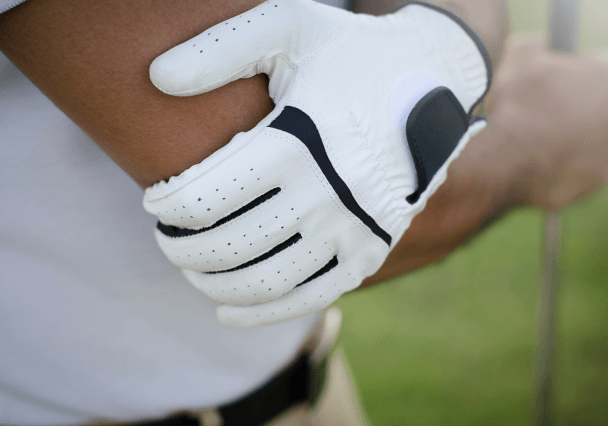
What is Elbow Pain?
Elbow pain refers to discomfort or soreness felt in the elbow joint, which can arise from a variety of causes. It can result from overuse, injury, or underlying conditions affecting the muscles, tendons, ligaments, bones, or nerves surrounding the elbow, leading to stiffness, swelling, reduced mobility, or chronic discomfort.



Related Diagnoses

Tennis Elbow

Golfer's Elbow

Degenerative Osteoarthritis

Nerve Entrapment
Expanded Guide
- Tennis Elbow: Lateral epicondylitis, commonly known as tennis elbow, is a condition that causes pain and inflammation on the outer part of the elbow. It occurs when the tendons that attach to the lateral epicondyle, a bony bump on the outside of the elbow, become strained or overused, leading to tiny tears and degeneration. The condition typically affects the extensor carpi radialis brevis tendon, which helps extend and stabilize the wrist. Repetitive wrist and arm motions, such as those involved in tennis, typing, painting, or using tools, can cause this strain, making tennis elbow common in both athletes and individuals whose daily activities involve repetitive movements. The primary symptom of tennis elbow is pain and tenderness on the outside of the elbow, which can radiate into the forearm and wrist, particularly during activities like gripping, lifting, or twisting. The pain often worsens with specific movements, such as shaking hands or holding a cup, and in severe cases, it can weaken grip strength and make even light activities painful.
- Golfer’s Elbow: Medial epicondylitis, commonly known as golfer’s elbow, is a condition characterized by pain and inflammation on the inner side of the elbow, where the tendons of the forearm muscles attach to the medial epicondyle, a bony bump on the inside of the elbow. This condition occurs when these tendons, particularly those responsible for flexing the wrist and fingers, become overused or strained, leading to small tears and irritation. While it is called golfer’s elbow, the condition can affect anyone whose activities involve repetitive motions of the wrist and forearm, such as swinging a golf club, throwing, lifting, or gripping. Activities like gardening, painting, and playing certain musical instruments can also lead to medial epicondylitis. The main symptoms of medial epicondylitis include pain and tenderness on the inner side of the elbow, which can sometimes extend down the forearm and into the wrist. The pain often worsens with movements that involve flexing the wrist, such as gripping an object, shaking hands, or lifting a weight. In some cases, the pain may also be accompanied by stiffness, weakness in the hands and wrists, or a tingling sensation in the fingers, particularly the ring and little fingers.
- Degenerative Osteoarthritis: Elbow osteoarthritis, also known as degenerative joint disease, occurs when the cartilage that cushions the bones in the elbow joint gradually wears away over time. The elbow is a hinge joint formed by three bones: the humerus (upper arm bone), the ulna, and the radius (both forearm bones). Cartilage allows these bones to move smoothly against one another without friction. In osteoarthritis, as the cartilage deteriorates, the bones rub directly against each other, causing pain, stiffness, and reduced mobility. Although elbow osteoarthritis is less common than arthritis in weight-bearing joints like the hips and knees, it can still develop due to factors like aging, previous injuries (such as fractures or dislocations), or repetitive stress from physical activities or work. Conditions like rheumatoid arthritis or past joint infections can also increase the likelihood of developing osteoarthritis in the elbow. Symptoms of elbow osteoarthritis typically include pain, stiffness, and a reduced range of motion in the elbow, making it difficult to fully bend or straighten the arm. The pain often worsens with activity and may improve with rest, but as the condition progresses, even simple movements can become painful. Some people may experience swelling, grinding sensations, or locking of the joint, and in more advanced stages, bone spurs (osteophytes) may form, further restricting movement and increasing discomfort.
- Nerve Entrapment: Elbow nerve entrapment refers to conditions in which nerves passing through the elbow become compressed or irritated, leading to pain, numbness, weakness, or other neurological symptoms in the arm, hand, or fingers. The two most common types are cubital tunnel syndrome and radial tunnel syndrome, which affect the ulnar nerve and radial nerve, respectively. Cubital tunnel syndrome occurs when the ulnar nerve, which passes through the cubital tunnel on the inner side of the elbow, becomes compressed. This can lead to pain, numbness, and tingling in the forearm, ring finger, and little finger, and may cause hand weakness or difficulty gripping objects. Symptoms often worsen when the elbow is bent for extended periods, such as during sleep or while holding a phone. In contrast, radial tunnel syndrome involves compression of the radial nerve as it passes through the radial tunnel on the outside of the elbow. This can cause pain in the outer elbow and forearm, particularly when extending or rotating the wrist, but typically does not cause significant weakness or numbness. Both conditions can result from repetitive elbow movements, prolonged pressure on the elbow, or injury to the area. Activities like typing, manual labor, or sports can increase the risk of nerve entrapment.
Frequently Asked Questions
Have more questions? Schedule a consultation with Dr. Patel to gain additional insights and discuss treatment options. We are committed to advancing your health through patient education and a safe, minimally invasive approach.
Elbow pain is diagnosed through a combination of patient history, physical examination, and diagnostic tests. The doctor will assess symptoms, ask about activities that aggravate the pain, and check for previous injuries or conditions. During the physical exam, they will inspect the elbow, test its range of motion, and evaluate muscle strength. Diagnostic tests like X-rays, MRIs, or ultrasounds may be used to identify fractures, soft tissue damage, or nerve issues. Special physical tests, such as Tinel’s sign or Cozen’s test, can help pinpoint specific conditions like nerve irritation or tendinitis.
Treatment for elbow pain includes rest, ice, and over-the-counter medications like NSAIDs to reduce pain and inflammation. Physical therapy can help strengthen muscles and improve flexibility, while braces or splints provide support. For more severe cases, corticosteroid or platelet-rich plasma (PRP) injections may be used. Surgery is typically reserved for serious injuries such as tendon ruptures or chronic nerve compression. Long-term management often involves modifying activities, improving ergonomics, and lifestyle adjustments to prevent future pain.
The duration of elbow pain depends on the cause and severity. Mild strains or overuse injuries may heal within a few days to weeks with rest and treatment. More serious conditions, such as tendinitis or fractures, can take several weeks to months to fully recover. Chronic conditions or unresolved injuries may persist longer and require more intensive treatment.
Untreated or chronic elbow pain can lead to complications such as decreased range of motion, persistent weakness, or joint instability. It may also result in long-term conditions like nerve damage, chronic tendinitis, or arthritis if not properly managed. In severe cases, complications may require surgery for correction.
Gramercy Center
Take the first step towards a healthier life by scheduling your initial consultation with Dr. Patel. At our clinic, we specialize in minimally invasive procedures that offer faster recovery, improved function, and decreased pain. Our client-centered approach ensures that you receive the highest quality care tailored to your unique needs. We look forward to offering you an exceptional experience.
